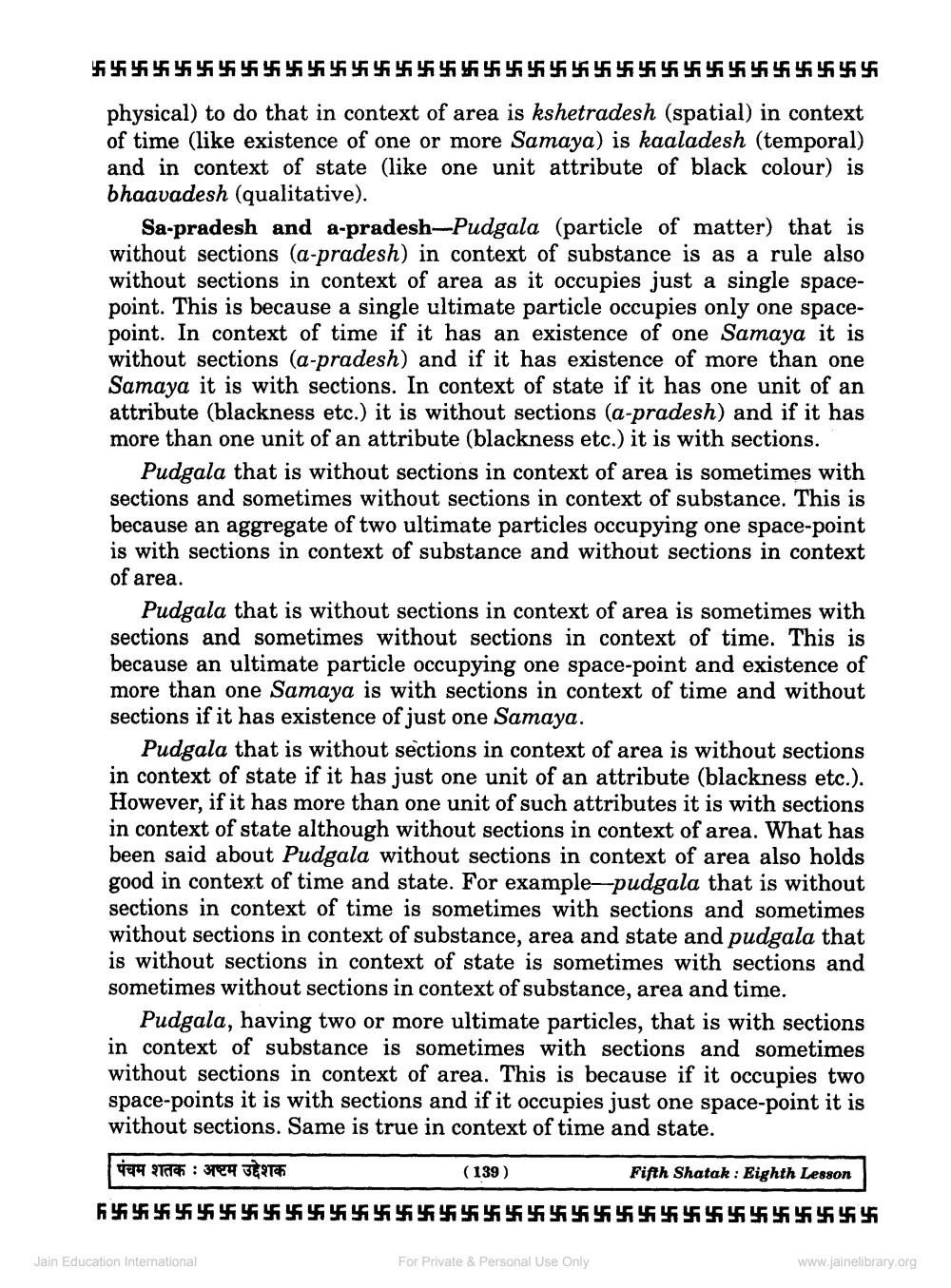________________
$145454545454545454545454545454545454 455 456 457 455 456 455 456 457 458 455 456 457 455 456 457 457
physical) to do that in context of area is kshetradesh (spatial) in context of time (like existence of one or more Samaya) is kaaladesh (temporal) and in context of state (like one unit attribute of black colour) is bhaavadesh (qualitative).
Sa-pradesh and a-pradesh-Pudgala (particle of matter) that is without sections (a-pradesh) in context of substance is as a rule also without sections in context of area as it occupies just a single spacepoint. This is because a single ultimate particle occupies only one spacepoint. In context of time if it has an existence of one Samaya it is without sections (a-pradesh) and if it has existence of more than one Samaya it is with sections. In context of state if it has one unit of an attribute (blackness etc.) it is without sections (a-pradesh) and if it has more than one unit of an attribute (blackness etc.) it is with sections.
Pudgala that is without sections in context of area is sometimes with sections and sometimes without sections in context of substance. This is because an aggregate of two ultimate particles occupying one space-point is with sections in context of substance and without sections in context of area.
Pudgala that is without sections in context of area is sometimes with sections and sometimes without sections in context of time. This is because an ultimate particle occupying one space-point and existence of more than one Samaya is with sections in context of time and without sections if it has existence of just one Samaya.
Pudgala that is without sections in context of area is without sections in context of state if it has just one unit of an attribute (blackness etc.). However, if it has more than one unit of such attributes it is with sections in context of state although without sections in context of area. What has been said about Pudgala without sections in context of area also holds good in context of time and state. For example-pudgala that is without sections in context of time is sometimes with sections and sometimes
ut sections in context of substance, area and state and pudgala that is without sections in context of state is sometimes with sections and sometimes without sections in context of substance, area and time.
Pudgala, having two or more ultimate particles, that is with sections in context of substance is sometimes with sections and sometimes without sections in context of area. This is because if it occupies two space-points it is with sections and if it occupies just one space-point it is without sections. Same is true in context of time and state.
पंचम शतक : अष्टम उद्देशक
(139)
Fifth Shatak: Eighth Lesson
455 456 457 455 456 457 45545454545454545454545454545454545454545454545454545454545
Jain Education International
For Private & Personal Use Only
www.jainelibrary.org




